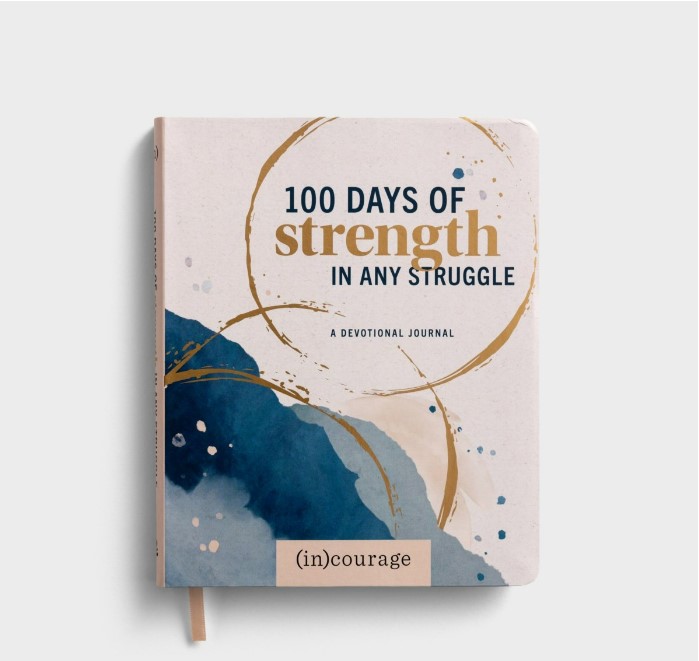“Does your grandmother still live there?” eager learners ask me as I unfold a personal family story related to the history of American housing discrimination and redlining. In short, from 1933 to 1968, while increasing America’s housing stock, local, state, and federal housing policies mandated racial segregation. The government’s efforts were designed to provide white, middle- and lower-class families home ownership in new suburban communities, while African-Americans and other people of color were pushed to rent in urban housing projects.
In response to learning this “forgotten” history, students are given the opportunity to pause and reflect on how this type of geographical sorting has shaped their family’s stories. To model this reflective process, I pull back the curtain on my grandmother’s house where she remained after my grandfather died in 1987. I allow learners to take a peak. I display a picture of the modest, shack-ish house, flanked by a tiny yard in the front and Interstate 40 in the rear. I display the numbers, 59, 18, 10, and guide learners on a journey connecting history to the present.
59. Even though my grandfather served in the Korean War, African-American soldiers were not given access to the GI Bill that helped white veterans buy homes. My grandparents began renting this house in 1959.
18. The house is currently worth around $18,000.
10. In rent, over the years, my grandmother could have bought the house ten times!
Students gasp, and always, someone squeaks out, “Does your grandmother still live there?” Implied in the question is, “Why does she still live there?” I feel obligated to justify her choice to maintain secured within her community, cocooned by family, friends, and our church within walking distance from her front door. She did not own a car, had no need for one, and did not know how to drive.
But while my mind focuses to encapsulate the forced limitations of a rental property in an economically poor, black neighborhood, my heart celebrates the wealth overflowing from my grandparents’ presence and love in my life.
I am honored to be the first of their grandchildren. They were my daycare while my parents worked. I remember roaming and exploring endlessly through what I now know were narrow, cramped rooms connected only by door frames. There was no extra square footage for a hallway. Somehow, as children do, my youngest uncle (only a few years older) and I would sprawl out on the floor to engage in coloring oversized coloring books. At will, I pushed all the buttons on the 8-track player — stop, play, stop, play, repeat — and made the volume rise and fall to each extreme. I must have been the most annoying DJ.
Reminiscing, I hear my grandfather’s voice echoing, “Stand back,” while he chucked wood into the warm morning stove. I hoped to get close enough to share his view of the flames rising and jumping up from the stove’s open eye. In this case, curiosity did not kill the cat. I am told that I touched the stove once, and that day it was curiosity that died.
While describing to my students how the one bathroom, formally an outhouse, had been installed on the back porch, adjacent to the kitchen cabinets, I see my grandmother sitting in a kitchen chair carefully and skillfully guiding laundry through the washer ringer, maneuvering bedding through that primitive washing machine that invaded and overtook the entire kitchen.
As I disclose how walls, highways, and interstates strategically carve through low-income neighborhoods, I refer back to the picture showing a clearly visible wall behind my grandmother’s house where a vegetable garden and fruit trees used to be. The joy of biting into a raw radish returns to my taste buds. My uncle and I were both horrified and tickled when we discovered a worm hole after we took big bites from the apple that used to be its home and food source. To this day, I wonder if I unknowingly ate the worm.
Recently, my grandmother, severely weakened by Parkinson’s disease, had been spending less time in her home and more time in the care and homes of her adult children. She was cared for like a queen. At times, I wondered if she was relieved and elated to be outside of the cramped spaces of her shack-ish house and walled-off community. On January 3 of this year, my grandmother requested to spend the night in her own bed, in the house she had called home since 1959. Two of her children assisted her with her nightly routine. My dad, her oldest, stopped by on his way home from a prayer meeting to kiss her goodnight. Comfortably and peacefully, she drifted off to sleep and into eternal rest.
For the first time in my whole life, my grandmother does not live in that house.
My grandparents were not able to give their children an inheritance, but they were able to leave a legacy of love. Their love continues to nourish me, and I am honored to have been loved by them.
Your circumstances may not be the stuff that dreams are made of, but your life has the substance of a true love story.
What love stories do you carry in your own family?
[bctt tweet=”Your circumstances may not be the stuff that dreams are made of, but your life has the substance of a true love story. -@brownicity:” username=”incourage”]
Leave a Comment






Thank you, Lucretia, for finding the good in this story that could be a source of anger, bitterness, or life-long resentment. You are wise, and I can see that your story will be redemptive, even as it is unflinchingly truthful.
What has helped me to “find the love” in my own story is the truth that families are handpicked by God. HE knows what we need, and so, sometimes, the rockier parts of our stories reveal that being part of a particular family story and being parented by a particular pair was the price for becoming the person I am today.
Michele.
I am so honored to come through such a lineage — one where people were given little (in the natural), but cultivated much!
Thank you!
LCB
Lucretia,
That part of our cultural history needs to be kept alive. Most of us including myself don’t know about that part of black history. We desperately need to hear those stories about hard circumstances, yet love filled. Those people had every right to be angry with the whites. They serve with them in war times yet don’t get the rewards. You have a great testimony to pass along to the next generation. A legacy of love & contentment in the midst of trials. We must remember this: Your circumstances may not be the stuff that dreams are made of, but your life has the substance of a true love story.
Blessings 🙂
You are right Beth. There is so much history that has been ‘hidden’ from popular understanding. We need to know the ‘hidden’ stories as a part of our lived experience. And how can we truly understand and appreciate the rainbow without first knowing of the rain?
Thank you.
LCB
Lucretia,
I have been asking my mom to tell me stories – stories of her childhood, her adolescence, her early adult life (everything pre me). I want to know the memories that stick out in her mind. Just like your grandmother left a historical and personal legacy, my mom has a legacy to be shared through the passing on of stories. I’ve also begun a journal of the one-liners my dad said all the time. Maybe one day someone will look in that journal and learn something about my dad through his sense of humor. I hope you have written this post in a journal somewhere so that your family into the future can read your grandmother’s story and know of the great memories you had in her tiny but loved home. Thank you for sharing this beautiful love story about the heart and home of your grandmother (and the history that accompanies it).
Blessings,
Bev xx
Bev.
Let’s keep recording the memories and sharing the stories. We are connected by our stories.
Thank you.
LCB
Thank you, thank you, thank you for sharing this!
Lynn,
You are welcome!
Thank you for reading.
LCB
My grandparents too lived in a “shack-ish” house very similar to the one you described. They moved there in 1940 and remained there until their deaths. As you so beautifully described they left no inheritance for their children but the legacy of love they left is priceless! As I sit here with my 4 year old grandson I pray that he can say the same about me.
We can’t pick life circumstances but we can be used by God in those circumstances regardless of what they are.
Hi Vicki!
Yes, ‘we can’t pick life circumstances, but we can be used by God in those circumstances regardless of what they are.’ I love how my grandparents’ love supersedes the meagerness of their belongings. They belonged to Him. Their love was a generous gift from Him.
Thank you.
LCB
I’m moved to writing a journal page also. I hope I can fill one page… as we did have one good grandparent although both sets of grands were neighbors.. my mom got pregnant by the boy next door… and seven children later, lots of abandonment, disagreements, and divorce as the final chapter.. it may be hard to construct a legacy story BUT GOD
saved me and the love of mom and pop pop are worthy of a good start to share and all the fullness and goodness of the Lord! Thanks Lucretia, you’re family sounds lovely and blessings to y’all
Sadie,
You’re welcome. Thank you for sharing. I love your ‘BUT!!!’ Yes!! But, God! And through you, the love legacy blossoms.
Shalom
LCB
Your family history is similar to mine, except that my family is white. My grandparents lived through the depression era and 2 world wars. They raised 5 children in a house they didn’t own, including a son with Down Syndrome. They had a very small pension and bought a travel size trailer. They rented a lot in a trailer park that had a laundry room and bath house. My grandma died of cancer in 1954 and my grandpa and uncle lived there until 1971. My parents and I lived in trailers too. We moved around to places where my father worked. He was a construction company electrician. Most of my aunts and uncles rented houses or trailers. My childhood was mostly transient. When I entered junior high school, we finally settled in one place until I graduated high school. Until I began writing this message, I never thought much about my unusual upbringing. I never felt poor. When we moved someplace new, some kids made fun of me, but I didn’t let that make me feel inferior. We can overcome our past and live in the present with hope and love and courage. Our childhood molds our character, but not our destiny. I’m not rich, and our income doesn’t cover all of our expenses every year. We have debt but manage to pay enough each month to satisfy the creditors. I don’t think I’ll live long enough to own our home, even though we have been here 46 years. So many people have similar stories whether they are black or white or male or female. Let’s pray for each other that we will frame a better future for our children and find our similarities instead of our differences.
Jo R,
Thank you for sharing. You are right! When we are allowed to share our stories, we can find our mirroring commonalities that allow us to see ourselves in the other. And when we see ourselves in others, we can shed the false narrative of ‘us and them,’ and see that we belong to each other. There is no ‘them,’ there is only ‘we’.
Shalom
LCB
Beautifully written. Thanks.
Lucretia,
Wow!
Thanks so much for sharing such a beautiful tribute to your Grandparents. I also thank you for the history lesson you shared as I never heard or read that only the whites were eligible for the GI Bill and this was wrong! Despite how wrong it was , your Grandparents seemed to be content and happy as they were . It still upsets me as it just isn’t fair for him to serve and not get the same benefits!
But, you wrote this in such a beautiful way and it was definitely a true love story to be proud of! It speaks so much of your family and I’m sure you learned a lot from them and please never stop sharing this story . These are what life is made for , the memories and love we share ! ( isn’t it funny as kids , we saw things so different )
This story reminds me of the old days that I would stay with my MawMaw and Pawpaw. He also was a Korean War Vet, White but they rented until I was about 8 years old. I always thought it was because they were in the low income range, as they were . I, too find when I think back, I was the second grandchild, my sister and I were content in whatever small home and whatever we had. Well, to this day I have a poor taste in my mouth for bologna as my MawMaw made us bologna or tuna sandwiches almost daily for lunch , lol . She was our daycare most of the years! Great times and although my Pawpaw passed away in 2001 , my MawMaw is still with us but her Dementia is getting worse , I try to call her every few weeks and on Saturday she did know who I was when I called. I just miss the days we could talk about old times. I remember sitting on the front porch in the rockers with my Pawpaw as he would tell me stories for hours. These are what dreams and life are made of in my eyes ! I am blessed to have the love in my heart he had as he would always give anyone the shirt off his back , that and my bright blue eyes , I thank him for!
Thanks again and sorry I started a novel, lol
Hi Jen!!!
I loved reading your ‘novel!’ Thank you so much for sharing those stories. As a child, bologna was a staple for us as well and I also spent much time on the front porch listening to granddad’s and grandma’s stories. To this day, I have an affinity for front porch sitting. My husband and I used to host ‘pop cycles on the porch’ parties when we lived in a house with a great front porch!
I loved reading your stories. Keep sharing.
Shalom
LCB
Lucretia,
It’s sad how people were, and some are still being treated differently, and unfairly. Yet you’ve turned your Grandparent’s story into a touching, memorable, and loving one. Thank-you for sharing how their love prevailed.
Have a blessed, hope filled day all,
Penny
Hi Penny.
Thank you so much for reading.
I am fortunate to know this legacy of love.
Shalom
LCB
Lucretia, thank you! Your invitation to look at the hard parts of life — but find the beauty in it — is so loving, gracious, healing and wonderful! Thank you so much! Grateful for you, Patricia
Thank you Patricia!!!
And thank you for your encouragement!
Shalom
LCB
Great reflection. So honored to be a part of this great story about Mom’s life in the shackish house where your dad and I gathered every Sunday after church for Sunday dinner. Mom was a great cook. She would feel some kind of way if we didn’t come on Sundays. The Pastor and some of the gospel choir would be there also. She would feed the neighborhood. She didn’t know she was poor. She was blessed she would say and highly favored. Whoever dropped by was welcome. I missed the Sunday tradition of meeting at her house. The house was small but could hold a lot of people. Many more memories of love at the shackish house. Where love abounds, Grace much more abounds.
S. Jean Mom
There was no poverty there!!! Generosity abounded in many forms — love, food, fun, smiles, family! The tiny house itself could not contain the greatness that pored from the home. Though ‘shack-ish’ in stature, the house was made a mansion by the union of Delphis & Pearline.
Thank you for sharing more about her!
LOVE LOVE,
LCB
Memories are so precious. I grew up in poor circumstances. My earliest memory was of our family of 5 in a 1 bedroom garage apartment, where I had to sleep on the living room couch, my parents beside me on a mattress on the floor, while my brothers got the bed in the bedroom. I won’t go into all the details of my life during that time. The next home was a 2 bedroom. My parents got one and my brothers got the other. I got to sleep on a chair that made out into a twin bed on the screened-in back porch. It was mighty cold in the winter and awful hot in the summer, but it was a neat adventure for me. At least we did have an in-door bathroom, where my relatives did not. Living in Louisiana, they still had to use those nasty old out-houses, back then. Their houses, and ours, some might have considered shacks, but they were home to all of us. May God Bless.
Melody.
Amen!!
Thank you so much for sharing. I am loving hearing everyone’s memories and stories. I love reading of all the similarities. It warms my heart!
Lucretia, I feel both ripped apart and sewn back together by reading this story. I’m so sorry for your loss, but so grateful you chose to share both this forgotten history lesson and peek into your grandparents’ legacy with us in this space. I am better for having read it. xx
Thank you Becky.
I am grateful for the opportunity to share it.
I am loving how the replies are full of similar stories. The connections are so heartwarming.
Shalom
LCB
What a legacy! Thank you for sharing this.
Karen,
You’re welcome.
Thank you for reading.
Shalom
LCB
Lucretia – I am so grateful to “hear” the love spoken in your story! I was born in 1940 and had the privilege of growing up knowing all four of my grandparents who were immigrants from Sweden to a farming community in Minnesota. Though they lived through the depression as did my parents, I never knew hunger or want. Our home welcomed strangers, missionaries, evangelists as well as the local pastor and family! The Sunday table was big and always enough food! I see this a reflection of a quote from my grandmother – “when the heart has room, the home has room also!” May God help us to open our hearts to Him and then to others!
Ruth.
Thank you for sharing. Our families are very similar.
“When the heart has room, the home has room also” is a great family motto!
Shalom
LCB
Dear Lucretia,
Thank you for sharing so much LOVE, especially your grandmother’s. How precious and priceless! May God continue to use your story to help all of recognize and rectify the discrimination that still needs to happen.
Joan.
Thank you for reading and allowing me to share my grandmother’s love with you.
Shalom
LCB
Wow… Lucretia what a beautiful and touching story. I can relate on so many levels. Your story sounds so familiar to my own. I too recognize that shack-ish home that was always filled with an over abundance of love and family. As the second oldest grand child and the first boy I was allowed to rule the roost experiencing all that little house had to offer through exploration. I fondly remember jumping the little drainage ditch that connected my grandparents home with my uncles and playing hide and go seek in the field around all the neighbors houses (who happen to be all kin), ensuring that I carefully stayed away from the plants in the modest flower garden of the front yard.
I definitely could go on and on recounting my childhood experiences as it relates to my grandma and her home but I really just want to say thank you for writing such a beautiful piece, because it is helping me heal a little more and brought me great joy to read about all that is wonderful in our upbringing.
Love you big sis… keep up the wonderful work God has called you to do.
Thanks little brother! We are fortunate and privileged to have such a rich heritage and inheritance. Our grandparents’ strength and love have been extended to and extended through us. What an honor. Some day, your grandchildren will tell loving stories about you — especially the first two!
Shalom
LCB
My Grandmother died last week. In the hours before she passed away I was able to thank her for her legacy of belief. My children know the importance of Christ thanks to the fact she made Christ a priority. The generations that are following are benefitting from her example!
Tara.
I am so sorry for your loss. May you feel God’s comfort as you grieve.
I am grateful that she left a legacy of knowing Christ!
Peace and blessings,
LCB
Lucretia, my heart is full and tears are flowing with the words of your beautifully written tribute of the legacy of love of your grandparents. Thank you sharing this lesson in history and priceless inheritance passed to you. I so needed to hear this today!
P.S. Berry is my grandmother’s maiden name!! Perhaps we are related! I am going to share your powerful tribute on my family reunion FB Page, “The Berry’s of Red Hill.”
Sallie,
You’re welcome. And thank you for your kind words!
Berry is my married name. My husband’s family is from Des Moines, Iowa. Perhaps there is a connection. That would be great!
Shalom
LCB
Sallie,
You’re welcome. And thank you for your kind words!
Berry is my married name. My husband’s family is from Des Moines, Iowa. Perhaps there is a connection. That would be great!
Shalom
LCB
Oh, my heart! Thank you for your beautiful story, for the memories your words brought me.
Joni,
You’re welcome!
Thank you for reading.
Shalom
LCB
You told this story in such a way, that I felt transported to your memories. I felt and saw every detail. I felt warm in front of the fireplace, and even saw your Grandma in her rocker. You are blessed with such talent. And I urge you if you haven’t already to write a book. I never knew about the GI bill thing. I am sure there is so much more to learn about. This kind of experience makes me so mad. But I am also grateful that GOD has opened my eyes and my heart even further. I have some similar experiences and they really do strengthen us. Thank You so much for sharing.
Virginia,
Thank you so much for reading and for the words of encouragement! I would love to write a book. Please pray for me as I engage in the process.
Shalom
LCB
Lucretia, thank you for sharing your story! It’s amazing what the love of a family can do. Your words are beautifully written, o could envision and feel the home and love. When you do write a book I will definitely support you!
Blessings,
Nancy
Nancy,
Thank you so much for your words of encouragement. I am happy to know that you could feel the experience I hoped to convey with words.
Shalom.
LCB